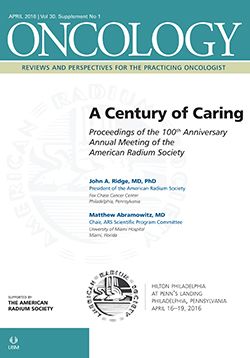(S052) Pseudoprogression and Radiation Necrosis in Adult Brain Tumor Patients Treated With Proton Beam Radiation Therapy
Central nervous system PRT appears to be well tolerated. Radiographic findings suggest that periventricular white matter may be more sensitive to radiation injury. Strategies to further reduce dose are warranted, as is the development of imaging and molecular biomarkers to identify patients at higher risk.
Marshall Meeks, BS, Sahaja Acharya, MD, Jiayi Huang, MD, Clifford Robinson, MD, Stephanie Perkins, MD, Michael Chicoine, MD, Jian Campian, MD, George Ansstas, MD, Albert Kim,MD, PhD, Gavin Dunn, MD, PhD, Beth Bottani, CMD, BS, Tianyu Zhao, PhD, Baozhou Sun, PhD, Keith Rich, MD, Jeff Bradley, MD, Christina Tsien, MD; Department of Radiation Oncology, Department of Neurological Surgery, Department of Medical Oncology, Washington University
BACKGROUND: Little research has been published regarding the incidence of pseudoprogression (PP) and radiation necrosis (RN) in adult patients receiving partial brain proton radiation therapy (PRT). We reviewed our institution’s initial experience as the first center to treat with a single-room proton system (Mevion).
METHODS: We retrospectively reviewed 21 sequential adult patients with glioma treated with PRT. All patients were followed for at least 6 months, and none had received prior brain RT. PP was defined as radiographic worsening (new lesions or a 25% increase in the enhancing lesion) that remained stable or decreased on subsequent magnetic resonance imaging without intervention. Symptomatic RN was confirmed based on clinical presentation and radiologic imaging (MR perfusion, positron emission tomography) or pathologic confirmation.
RESULTS: Median age was 46.3 years (range: 21.6–71.1 yr). Median RT dose was 50.4 GyE (range: 36.0–59.4 GyE). Median PTV was 41.2 cm3 (range: 10.1–210.5 cm3). Median follow-up was 362 days (range: 201–573 d). Eighteen patients (86%) received adjuvant chemotherapy (temozolomide or procarbazine, lomustine, and vincristine [PCV]). Four patients (19%) presented with periventricular enhancing foci within the RT field but distant from the surgical cavity. Three of the four patients developed symptomatic RN (one biopsy-confirmed) requiring intervention: one improved with steroids; a second patient was hospitalized in the Neurology/Neurosurgery Intensive Care Unit, with eventual improvement on steroids and bevacizumab; and a third patient was treated with laser ablation. Median time of development was 397 days (range: 242–413 d) posttreatment. One patient was asymptomatic, presenting at 265 days, and imaging changes subsequently resolved. One additional PP patient presented with subcortical enhancement (148 d) that subsequently resolved.
CONCLUSIONS: Central nervous system PRT appears to be well tolerated. Radiographic findings suggest that periventricular white matter may be more sensitive to radiation injury. Strategies to further reduce dose are warranted, as is the development of imaging and molecular biomarkers to identify patients at higher risk.
Proceedings of the 98th Annual Meeting of the American Radium Society -americanradiumsociety.org

Targeted Therapy First Strategy Reduces Need for Chemotherapy in Newly Diagnosed LBCL
December 7th 2025Lenalidomide, tafasitamab, rituximab, and acalabrutinib alone may allow 57% of patients with newly diagnosed LBCL to receive less than the standard number of chemotherapy cycles without compromising curative potential.